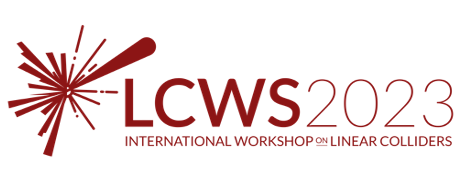Conveners
Accelerator: Conventional Facilities
- Nobuhiro Terunuma (KEK)
- Tomoyuki Sanuki
The Future Circular Collider (FCC) project is a major international effort aimed at designing and constructing the next-generation particle accelerator for high-energy physics research. As part of the FCC project, civil engineering feasibility studies are being conducted to assess the feasibility of building a large-scale collider, including tunnel excavation, site preparation, and...
From 2004 the Frascati Beam Test Facility (BTF) in the DAFNE
accelerator complex provides to the external user up to 1E10 electron
per bunch or up to 1E9 positron per bunch to develop their detector.
After an upgrade program terminated in 2020 of the beam test facility
a description of the status and available beam lines will be done.
C3 operates under Liquid Nitrogen (LN) at a temperature of ~80 K to improve the electrical conductivity of Cu by a factor of ~3, resulting in an accelerator structure shunt impedance of ~300MΩ/m. Since the accelerator structures are normal conducting, they dissipate ~2500 watts each. The structures are cooled by nucleate boiling, and the resulting cold saturated Nitrogen vapor is re-liquified,...
For the ATLAS Muon Spectrometer, the alignment of the inner, middle and outer tracking detectors is crucial for the precise measurement of the muon momentum. This alignment is monitored by fixing a back-illuminated coded mask on the inner detector, a lens on the middle detector, and an image pixel sensor on the outer detector. An image of the mask is projected, by the lens, onto the image...
In the X-band high-gradient test stand at KEK, Nextef, various normal-conducting high-gradient accelerating structures were high-power tested for, e.g., the CLIC prototype and SLAC distributed-coupling structures. However, April 3, 2019, significant fire occurred at Nextef, and all the high-gradient tests were terminated. It took three yours to recover the test facility focused on safety. We...



